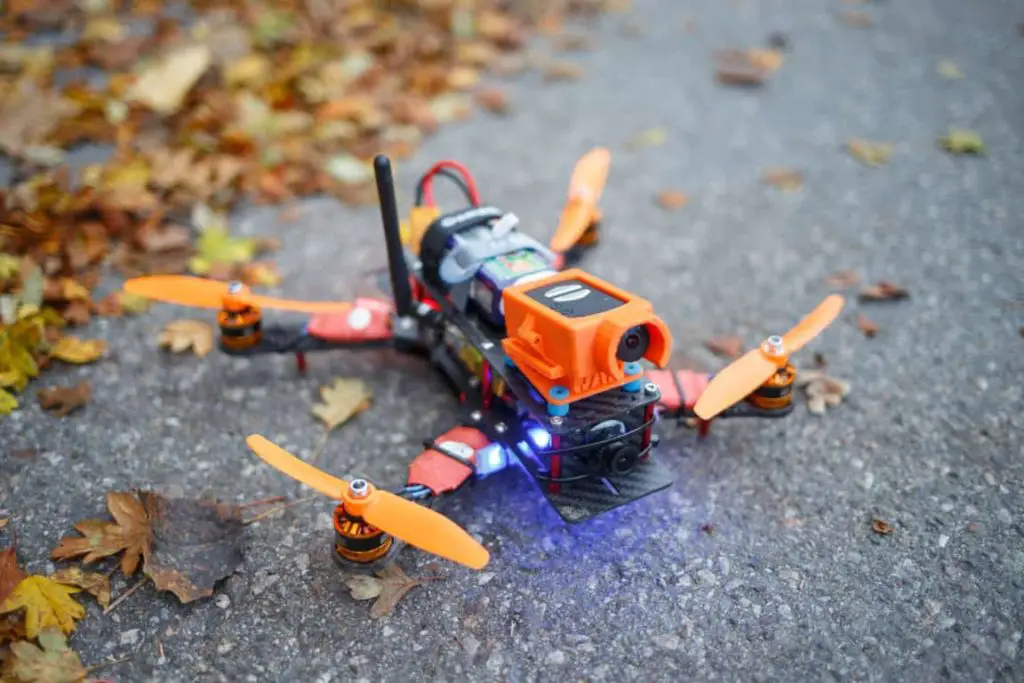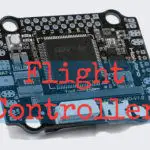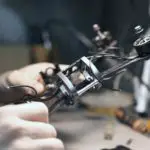Knowing the right time to land your drone is important. In this article, I’ll share with you the ways that can help you in deciding when to land your drone.
Land your drone when the battery voltage goes below 3.5 V per cell, or if 90% of the battery current has been drawn. You need sensors to measure those readings, which are displayed on your goggles or read out from your radio transmitter. You can also set an alarm based on the reading. Timer is the least accurate option.
Keep reading to understand more.
Why Should You Know When to Land Your Drone?

If you are asking this question, you probably haven’t flown a drone before. Knowing when to land your drone is like knowing when to fill up your car gas tank.
For the obvious reasons, you don’t want your drone to crash mid-flight. The impact from crashes due to depleted batteries can damage your drone. Note that you can improve the durability of your drone from sustaining crashes by having the right frame.
In the worse case, your drone might fall into something or someone which causes damage to the third party. You better make sure that you are covered by insurance!
It might also fall into a pond, which can permanently damage your drone (check out my drone waterproofing tips in this article). If you are flying long range, you might not be able to retrieve it after a crash!
The other thing that you should worry about is the battery life of your LiPo packs. As your drone flies, the voltage in your battery is being discharged. Over discharging the LiPo battery degrades the battery life. For the sake of your wallet, you would want your battery life to be as long as possible. Hence, you should land before your battery voltage goes below the recommended voltage.
How to Measure and Read the Battery Voltage?
Fortunately, there are ways to measure the voltage of your LiPo battery. This is usually achieved by having a voltage sensor in your flight controller, FPV camera or on screen display (OSD) module.
You can have the battery voltage displayed on your FPV video feed. While having the voltage reading on your video feed allows you to monitor the voltage easily, sometimes you might neglect the reading if you are too focused on the immersive FPV.
You can also feed the voltage reading to your radio transmitter if it has a telemetry support. Since you are wearing an FPV goggle, you would want to set a threshold and get your transmitter to read out the voltage once it hits the threshold.
Another cheaper option you have is to use a voltage alarm (GetFPV | Banggood). It is a device that you can connect to the LiPo battery through its balance plug. As soon as the battery voltage drops below the preset level, the alarm will start beeping.
There are also buzzers that you can connect to your FC (GetFPV | Banggood) for the same function. This is useful if you don’t fly long range, since you can’t hear the beep from a long distance. It is rather noisy though.
Note that the voltage sensor needs to be calibrated for better accuracy.
What is the Right Voltage to Land?
I would recommend you to land when your battery voltage is between 3.5-3.6 V per cell in flight. So, if you are using a 4S LiPo pack, you should land at 14-14.4 V.
A few minutes after landing, you would see the battery voltage go back to ~3.7-3.8 V per cell, which is close to either the recommended resting voltage or storage voltage. This is a phenomenon called the voltage sag, where the battery voltage drops at a faster rate at higher throttle. As you release the throttle, the voltage slowly recovers. If the recovered voltage is more than 3.8 V, you can stretch the battery a little bit more next time.
Note that the voltage sag is more apparent in low C rate and low cell count batteries. Hence, tiny whoops that use 1 S battery usually land at 3.2-3.3 V per cell.
There is no universally accepted right voltage to land. Some would stick with 3.5 V, some 3.3 V, and some even stretch their battery down to 3 V per cell before landing. Having said that, everyone agrees that the more you stretch your LiPo, the greater the damage to the battery.
Most of the LiPo batteries can be discharged down to 3 V. Some manufacturers even claim maximum discharge of 2.x V. Regardless of the minimum voltage recommended by the manufacturers, the more you discharge the battery, the shorter the battery life.
For instance, the battery that you consistently stop discharging at 3.5 V will have a longer battery life than the one you always discharge down till 3.3 V.
Monitoring the Current Drawn
Each battery has its own capacity, dictating what is the maximum current that it can hold. Hence, the amount of current drawn can also be used as an indicator to know if your drone still has enough juice to fly.
As a general rule of thumb, you should land when 90% of the current is used. For instance, if you are using a 1050 mAh LiPo, you should start finding a spot to land when 945 mAh has been drawn.
Current drawn is measured by a current sensor usually connected to your FC. Similar to voltage sensors, you can display the current drawn on your video feed if you have an OSD.
In terms of accuracy, current drawn is more accurate compared to battery voltage because of the voltage sag that affects the voltage ready. However, the current sensor needs to be calibrated to ensure accuracy. Moreover, it works only on fully charged batteries, since you wouldn’t know what is the balance left in the batteries. If you disconnect the battery, the reading will reset itself instead of continuing from where it was.
There is another drawback from using current draw reading. The capacity of a battery degrades after repeated charge and discharge cycles. Hence, the old batteries deplete faster than the new batteries. You might need to land when 80-85% of the labeled capacity is depleted if you are using older batteries.
Considering the pros and cons of both sensors, I strongly recommend you to use the current sensor in conjunction with the voltage sensor to decide when you should land your drone.

What about Virtual Current Sensors?
You might have heard about virtual current sensors in Betaflight. It basically estimates current based on the throttle level. I personally feel that it is unreliable and you should go for a real sensor, or a buzzer instead.
What if I Don’t Have Any Sensors?
On top of the virtual current sensor, you can use a timer to gauge when you should land.
To do this you will need to fly your fully charged drone for some time, say, 3 minutes. Then, measure the voltage of your battery using your charger or a voltmeter. If the voltage is around 3.7-3.8 V, great! The optimum flight time before you should land is 3 minutes. You will need to try a few times by adjusting the flight time to get the 3.7-3.8 V reading.
Remember, batteries deteriorate over repeated use. You will get shorter and shorter flight time and you should factor in this if you are using a timer.
Lastly, you can also gauge if you need to land by observing the throttle required to perform certain actions. For instance, if you need twice as much throttle to ascend, it’s time to land.
Failsafe
Some of the ESC have a failsafe feature where the power will be cut off if the battery voltage drops to a certain level. This will prevent over discharging that can damage your battery, in cases where you “forgot” to land.
Additional Information
Given the roles of both voltage and current sensors in protecting your battery and your drone, you want to make them as accurate as possible. This can be done via proper calibration.
How to Calibrate Voltage Sensors through Betaflight?
Voltage sensor calibration through Betaflight is extremely easy. First, check the voltage of your battery using your LiPo charger or a voltmeter/multimeter. Then, connect your drone to the Betaflight. Make sure the same battery is placed in your drone.
Go straight to the “Power and Battery” page. You should see the voltage as measured by your voltage sensor. If the reading differs from what you have measured, go to the “Voltage Meter” section and adjust the scale.
Let’s say your Betaflight is showing 16 V, but your measurement showed 14 V. Simply reduce the scale and press save. You should see Betaflight displaying an adjusted voltage value, say at 15.5 V. Continue to adjust the scale until Betaflight shows you the correct voltage. Remember to press save to reflect the changes!
If the displayed voltage is too far off the actual voltage, you will need to adjust the divider or multiplier value.
How to Calibrate Current Sensors through Betaflight?
The first thing you need to do is to fly your drone for a few minutes using a fully charged LiPo pack. Record the current drawn measured by the current sensor.
Then, remove the LiPo and charge it to full. You will need a charger that tells you how much current has been charged. Record that number. You might want to repeat this a few times using different LiPo to get an average value.
Connect your drone to the Betaflight and go straight to the “Power and Battery” page. You should see an “Amperage Meter” section. Adjust the scale according to the following formula:
New Scale = Existing Scale x sensor-measured mAh consumed / Actual mAh consumed
For instance, the existing scale in the Betaflight Amperage Meter section is 200. The flight consumed 500 mAh according to your current sensor. However, your LiPo requires only 400 mAh to be fully charged, which means only 400 mAh was actually consumed. The new scale would be 250 (200 x 500 ÷ 400). Remember to save the setting to reflect the change.
Similar to voltage sensor calibration, most of the time you just need to adjust only the scale.


